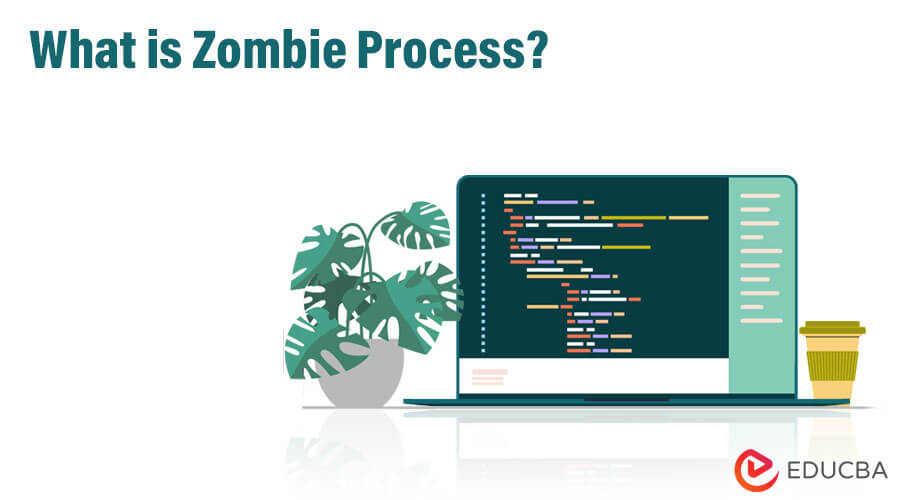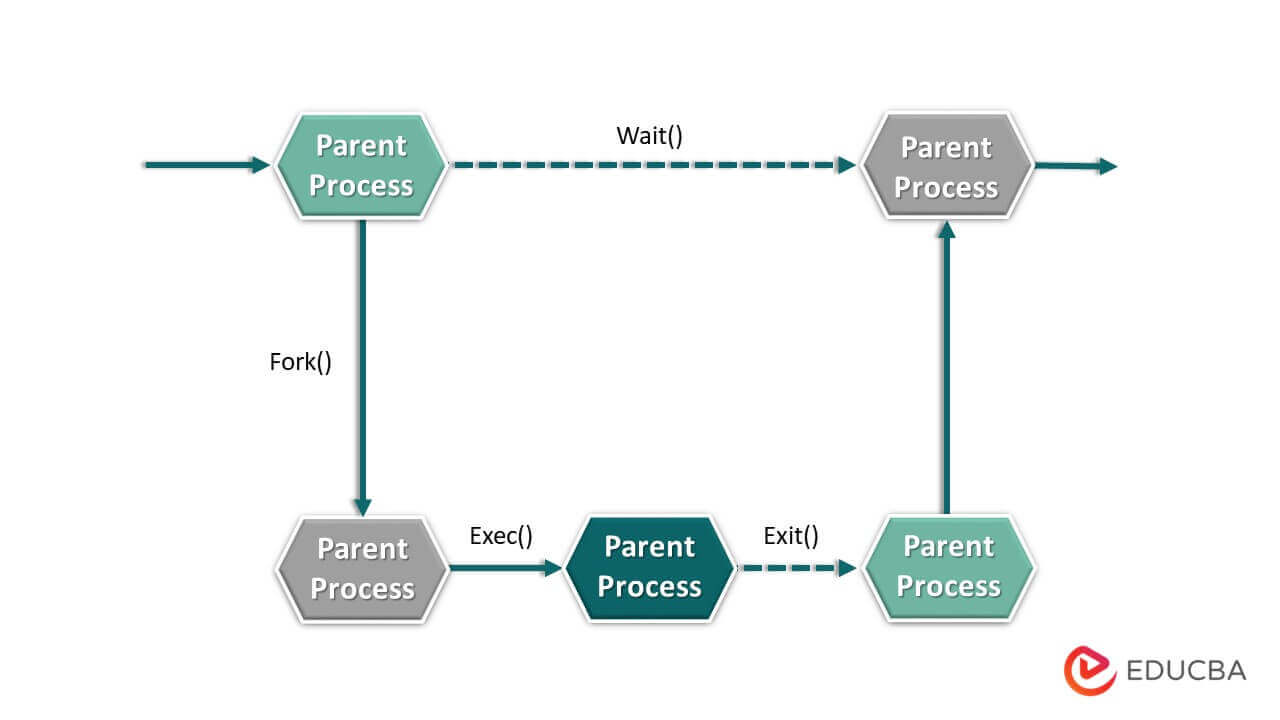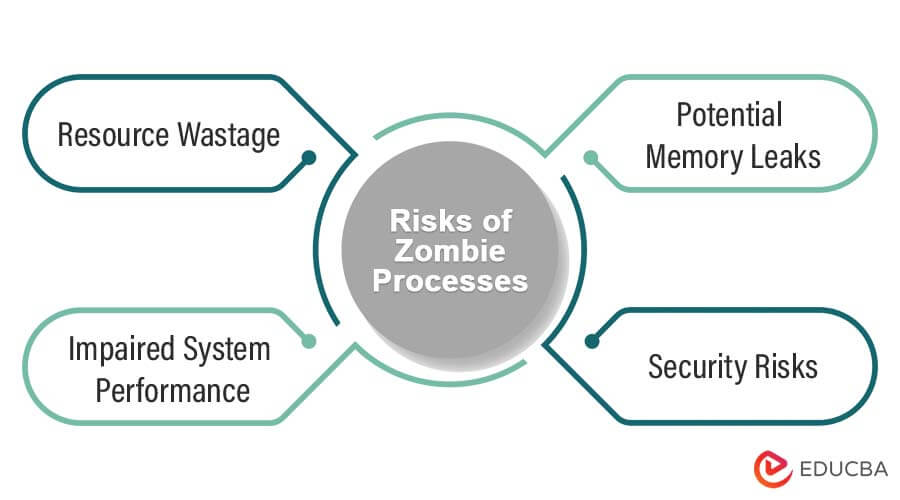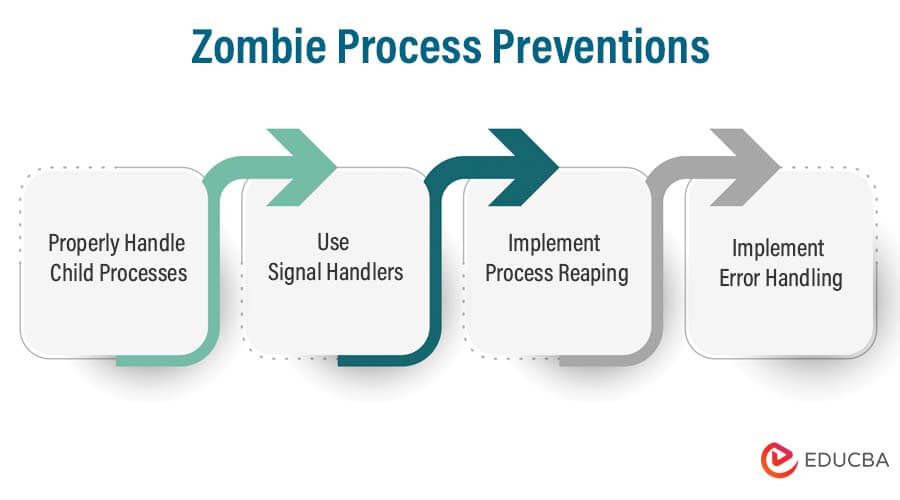Updated March 2, 2023
Definition
A zombie process is a type of computer program that has finished its work but still takes up space in the computer’s memory. This can happen when the program’s parent process doesn’t properly release it. Zombie processes can slow down a computer over time, but the computer can usually clean them up automatically. To avoid them, it’s important to manage processes correctly.
What is Zombie Process?
A zombie process is like an abandoned building that takes up valuable space in the city, even though no one is using it. Similarly, a zombie process is a computer program that has completed its task but still occupies valuable system resources, like memory and processing power, without serving any purpose.
To prevent zombie processes from piling up and causing performance issues, it’s crucial to ensure that the parent process correctly manages its child processes by calling the appropriate system functions. This allows the operating system to release the resources held by the zombie processes and keep the system running smoothly. So, just like how it’s crucial to maintain an organized city to ensure all the resources are used efficiently, it’s important to manage processes properly to avoid zombie processes and keep your computer running efficiently!
Key Takeaways
- Zombie processes do not consume CPU resources, but they can take up valuable system resources.
- The operating system can remove zombie processes automatically, but it’s best to prevent them from occurring in the first place.
- Zombie processes can be prevented by ensuring proper management of child processes, specifically by calling the appropriate system function to wait for the child process to terminate.
- If left unchecked, zombie processes can accumulate and cause performance degradation, leading to slower system response times and increased resource usage.
How does Zombie Process Work?
When a computer program is executed, it is launched as a new process with a unique process ID (PID). The parent process that launched the child process can wait for it to terminate using a system call, such as wait() or waitpid().
- If the parent process does not wait for the child process to terminate and collect its exit status using one of these systems calls, the child process becomes a zombie process. The zombie process still exists in the process table, but it no longer has an associated executable code in the memory, and its memory has been freed.
- The only information that remains about the zombie process is its process ID, its exit status, and other process-related information that the parent process may have needed to retrieve. This information is stored in the process table so that the parent process can retrieve it later using the appropriate system call.
- If the parent process terminates before collecting the exit status of its child process, the child process becomes an orphan process. In this case, the child process is inherited by the init process, which acts as its new parent process. The init process can then collect the child process’s exit status and remove it from the process table.
- The operating system can also remove zombie processes automatically by periodically scanning the process table for zombie processes and removing them. However, it’s best to prevent zombie processes from occurring in the first place by ensuring that parent processes properly wait for their child processes to terminate and collect their exit status.
Examples of Zombie Process
Example #1
In this example, the create_child_process() function creates a child process using the os.fork() system call in Python. The child process simply prints a message and exits using the exit() function call.
The parent process prints a message indicating that it has created a child process with a specific PID. However, the parent process does not wait for the child process to terminate using the appropriate system call, such as os.wait(). This can result in the child process becoming a zombie process.
When the parent process is done creating the child process, it waits for user input to keep the program running. If the child process has become a zombie process, it will still be present in the process table, occupying system resources until the operating system removes it.
Code:
import os
def create_child_process():
pid = os.fork()
if pid == 0:
# Child process code
print("Child process is running...")
exit(0)
else:
# Parent process code
print(f"Created child process with PID: {pid}")
# Parent process fails to wait for the child process to terminate
# The child process can become a zombie process
return
# Call the function to create a child process
create_child_process()
# Wait for user input to keep the parent process running
input("Press enter to continue...")Output:
Where <PID> is the process ID of the child process, which is created by the os.fork() system call in the create_child_process() function. After printing the message, the parent process waits for user input to keep the program running. Meanwhile, the child process completes its task and exits using the exit() function call.
Since the parent process does not wait for the child process to terminate using the appropriate system call, such as os.wait(), the child process becomes a zombie process. The operating system will remove the zombie process when it scans the process table.
Example #2
In this example, the create_child_process() function creates a child process using the fork() system call in C. The child process simply prints a message and exits using the exit() function call. The parent process prints a message indicating that it has created a child process with a specific PID. However, the parent process does not wait for the child process to terminate using the appropriate system call, such as wait(). This can result in the child process becoming a zombie process.
In the main() function, the create_child_process() function is called to create a child process. Then, the program waits for user input to keep the parent process running. Meanwhile, the child process completes its task and exits using the exit() function call. Since the parent process does not wait for the child process to terminate using the appropriate system call, such as wait(), the child process becomes a zombie process. The operating system will remove the zombie process when it scans the process table.
Code:
#include <stdio.h>
#include <stdlib.h>
#include <unistd.h>
#include <sys/types.h>
#include <sys/wait.h>
void create_child_process() {
pid_t pid = fork();
if (pid == 0) {
// Child process code
printf("Child process is running...\n");
exit(0);
} else if (pid > 0) {
// Parent process code
printf("Created child process with PID: %d\n", pid);
// Parent process fails to wait for the child process to terminate
// The child process can become a zombie process
} else {
// Forking failed
printf("Failed to create child process.\n");
exit(1);
}
}
int main() {
// Call the function to create a child process
create_child_process();
// Wait for user input to keep the parent process running
getchar();
return 0;
}Output:
Risks of Zombie Processes
Zombie processes pose certain risks and disadvantages, including:
- Resource wastage: Zombie processes occupy system resources, such as memory and process table entries, until they are removed by the operating system. This can lead to resource wastage, as the resources are not available for use by other processes.
- Potential memory leaks: Zombie processes can cause memory leaks if they are not properly cleaned up. This can happen if the parent process terminates before the child process is reaped, leaving the zombie process in memory indefinitely.
- Impaired system performance: If too many zombie processes are left running on a system, it can impair the system’s performance and cause it to slow down or even crash.
- Security risks: Zombie processes can potentially be exploited by attackers to launch denial-of-service attacks or gain unauthorized access to a system.
To mitigate the risks of zombie processes, it is important for parent processes to properly clean up their child processes by using the appropriate system calls, such as wait() or waitpid(), to reap their exit statuses and remove them from the process table.
Zombie Process Preventions
To prevent zombie processes, there are a few best practices that can be followed:
- Properly handle child processes: Parent processes should properly handle their child processes and wait for them to terminate using the appropriate system calls, such as wait() or waitpid(). This ensures that the child process is removed from the process table and its resources are properly released.
- Use signal handlers: Signal handlers can be used to catch signals sent by child processes when they terminate. This can be used to trigger the appropriate action in the parent process, such as reaping the child process.
- Implement process reaping: Process reaping involves periodically checking the process table for any zombie processes and reaping them. This can be done using system calls such as wait() or waitpid() or by implementing a signal handler for the SIGCHLD
- Implement error handling: Proper error handling can help prevent zombie processes by catching errors that can occur during the termination of child processes, such as signal interruptions or failed system calls. This can help ensure that the child process is properly reaped and its resources are released.
How to Kill Zombie Processes?
Zombie processes cannot be killed in the traditional sense, as they are already dead and do not consume any system resources. However, they still occupy an entry in the process table, which can cause issues for system performance and resource usage.
- To get rid of zombie processes, their parent process needs to reap them using the appropriate system calls, such as wait() or waitpid(). The parent process must call one of these functions to retrieve the exit status of the child process and remove it from the process table. This releases the resources held by the child process and removes the entry from the process table.
- If the parent process is not able to reap the zombie process for some reason, such as if it has terminated unexpectedly, then the init process can adopt the zombie process and reap it. The init process is the first process that is started when the system boots up and has a PID of 1. It periodically checks for orphaned processes and adopts them if necessary.
- In general, it is important to properly handle child processes in order to prevent the creation of zombie processes in the first place. This can be done by implementing the best practices mentioned earlier, such as properly handling child processes and implementing error handling.
Conclusion
Hence, zombie processes can cause issues for system performance and resource usage if not handled properly. By implementing best practices such as proper handling of child processes, using signal handlers, and implementing process reaping, zombie processes can be prevented. If they do occur, their parent process or the init process can reap them to release system resources.
FAQs
1. What do you mean by a zombie process?
Answer: A zombie process is a type of computer process that has finished running, but still has an entry in the computer’s memory. This happens when the program that started the process fails to properly clean it up. Although zombie processes don’t use any resources, they can cause problems if not handled correctly by the computer’s operating system.
2. What are zombie processes in Linux?
Answer: In Linux, a zombie process is a type of process that has completed its execution but still has an entry in the process table. This happens when the parent process of the child process fails to properly reap its exit status. A zombie process does not consume any system resources, but it can cause issues for system performance and resource usage if not handled properly.
3. Is Zombie process harmful?
Answer: Zombie processes themselves are not harmful, as they do not consume any system resources and are essentially just entries in the process table. However, if there are too many zombie processes, they can cause issues with system performance and resource usage if not handled properly. Additionally, if a parent process continues to create zombie processes without properly reaping them, it can indicate a programming error or other issue that could potentially lead to other problems with the system. Therefore, while zombie processes are not inherently harmful, it is important to handle them properly to prevent any negative impact on the system.
Recommended Article
We hope that this EDUCBA information on “What is Zombie Process?” was beneficial to you. You can view EDUCBA’s recommended articles for more information.







